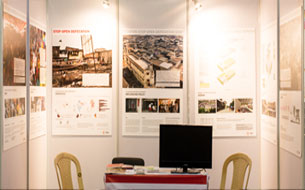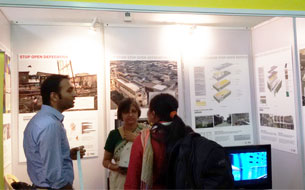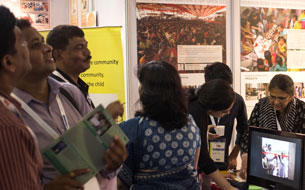Housing and toilet exhibitions give communities a platform to come up with and showcase affordable designs that accommodate their needs, and to discuss these with professionals, government officials, and each other. They act as forums for information exchange and the dissemination of innovative ideas about housing, secure land tenure, and essential services. They offer a starting point for negotiation within and between communities, and between communities and government. Finally, exhibitions are an opportunity to celebrate of the achievements of community organisations and movements.
In the first housing exhibition, held in 1986, the Mahila Milan group in Byculla, Mumbai used saris and other household articles to portray the kind of housing they wanted. This experience set the ground for similar exhibitions in other settlements. As the exhibition model has spread, they have begun to draw community representatives and officials from other cities, states, and countries to examine the life-size models displayed and better understand housing options.
Exhibitions help community groups learn that the technical aspects of house design, building and costing are not difficult to understand and master, and that, with confidence, they can devise their own solutions to housing problems. The exhibitions also show government officials an alternative paradigm for solving the problems of the urban poor in which communities design housing that meets their needs at a low cost and the state acts to facilitate access to land, infrastructure and finance.
Exhibitions provide the poor the opportunity to work as a cohesive unit to design their own homes and infrastructure. They are no longer beneficiaries waiting for structures to be designed and built by an architect or administrator with little understanding of their needs. Instead, housing exhibitions demonstrate to city and state officials that the poor are important partners in planning for city upgrading and development.


